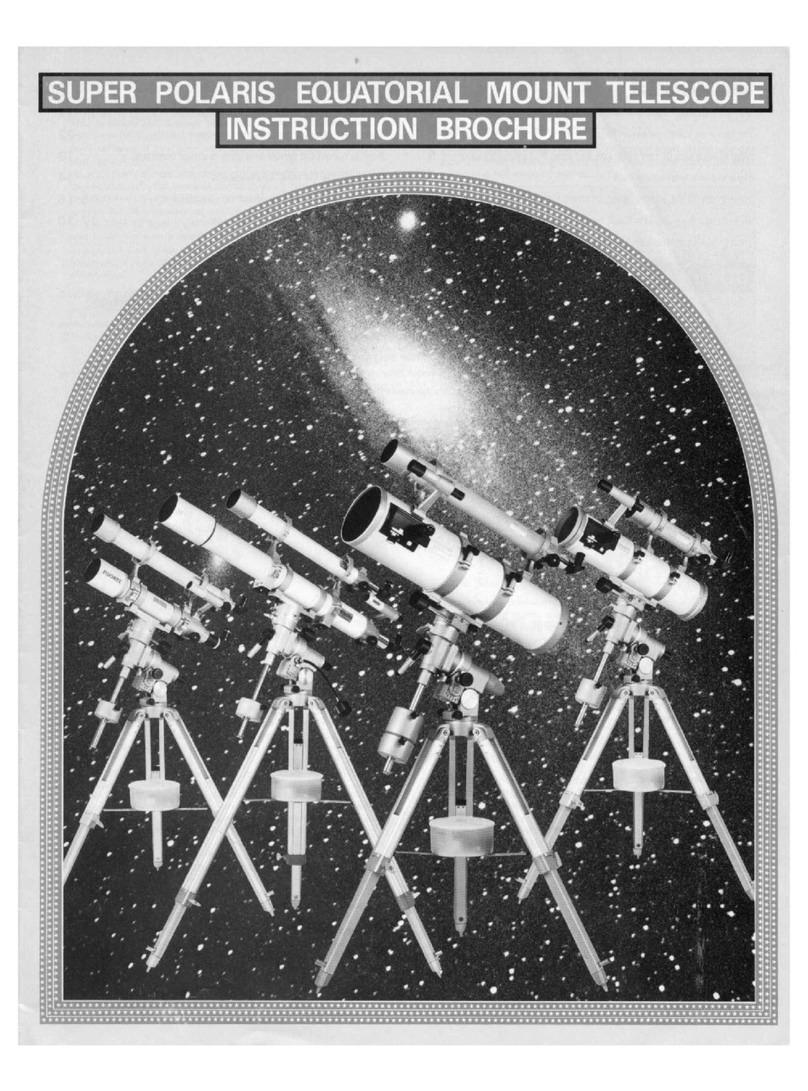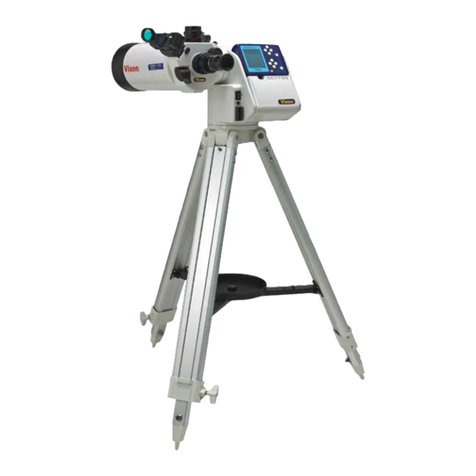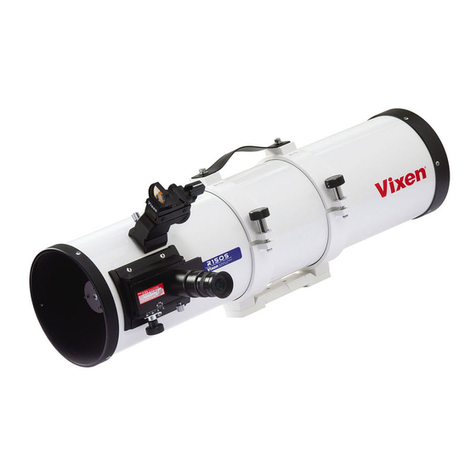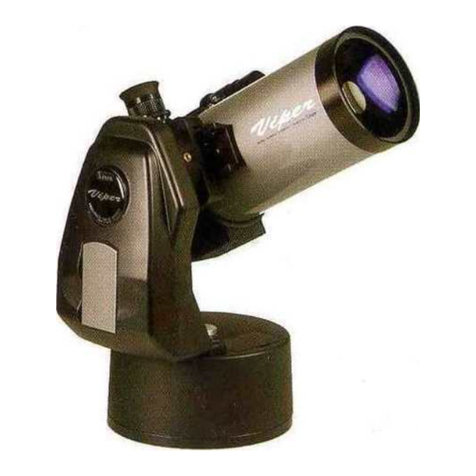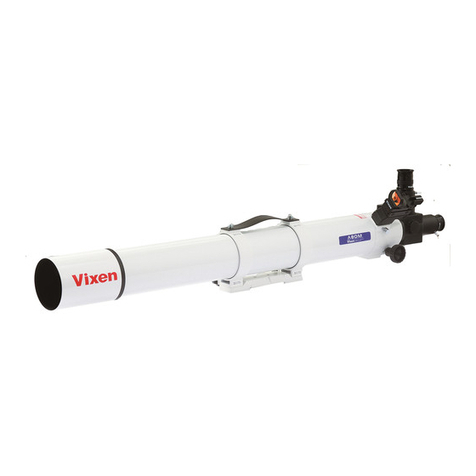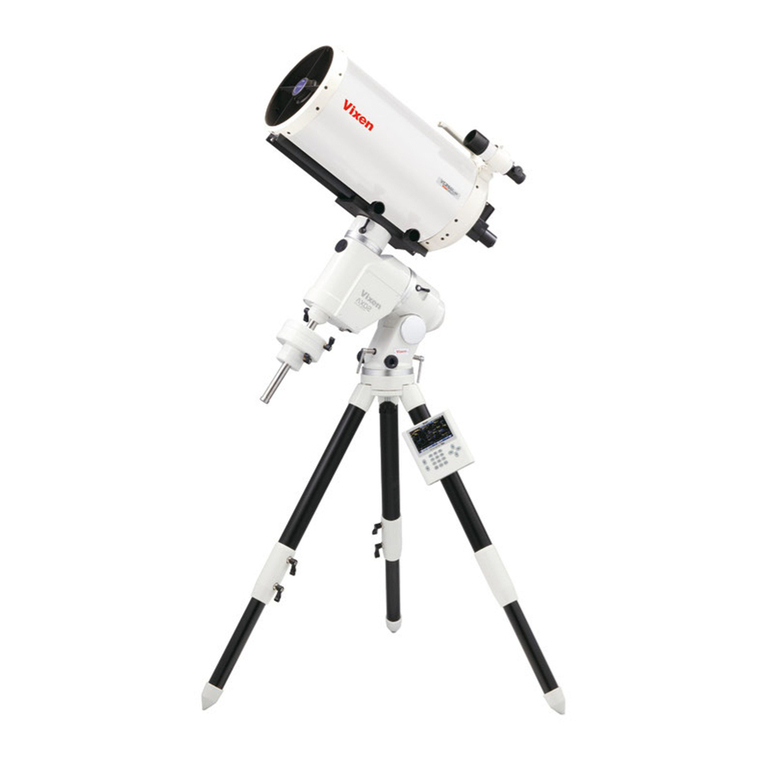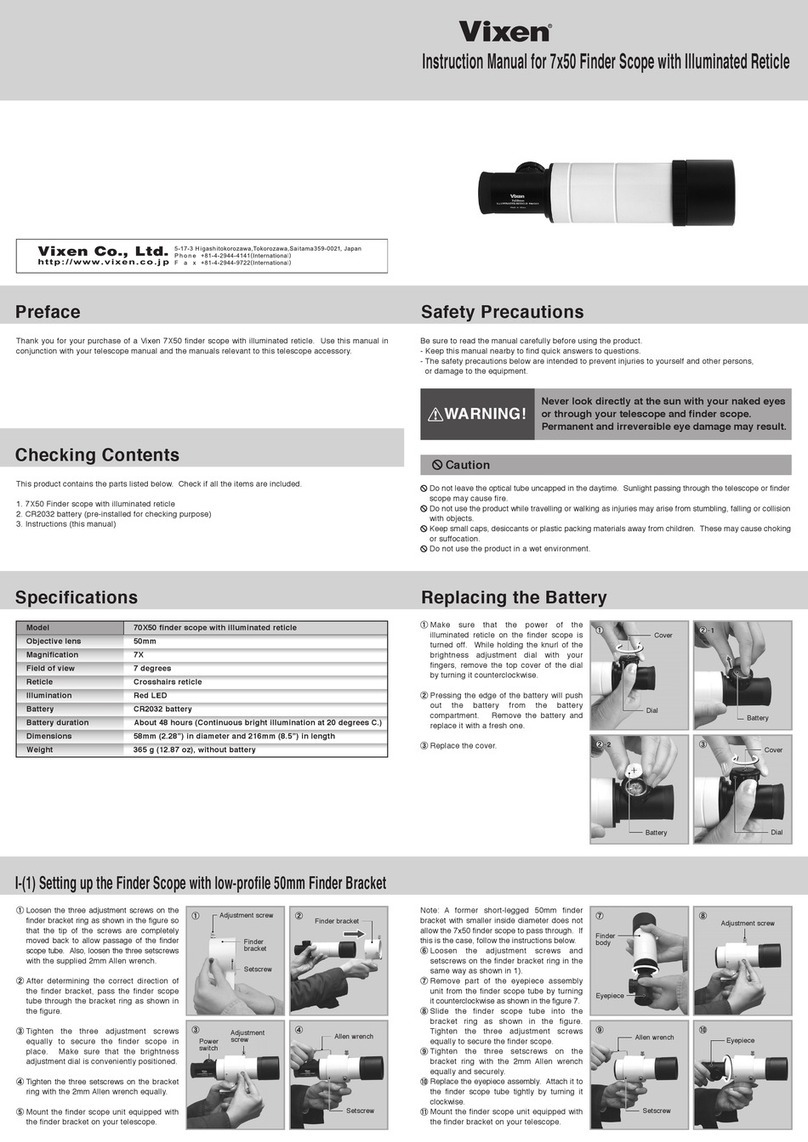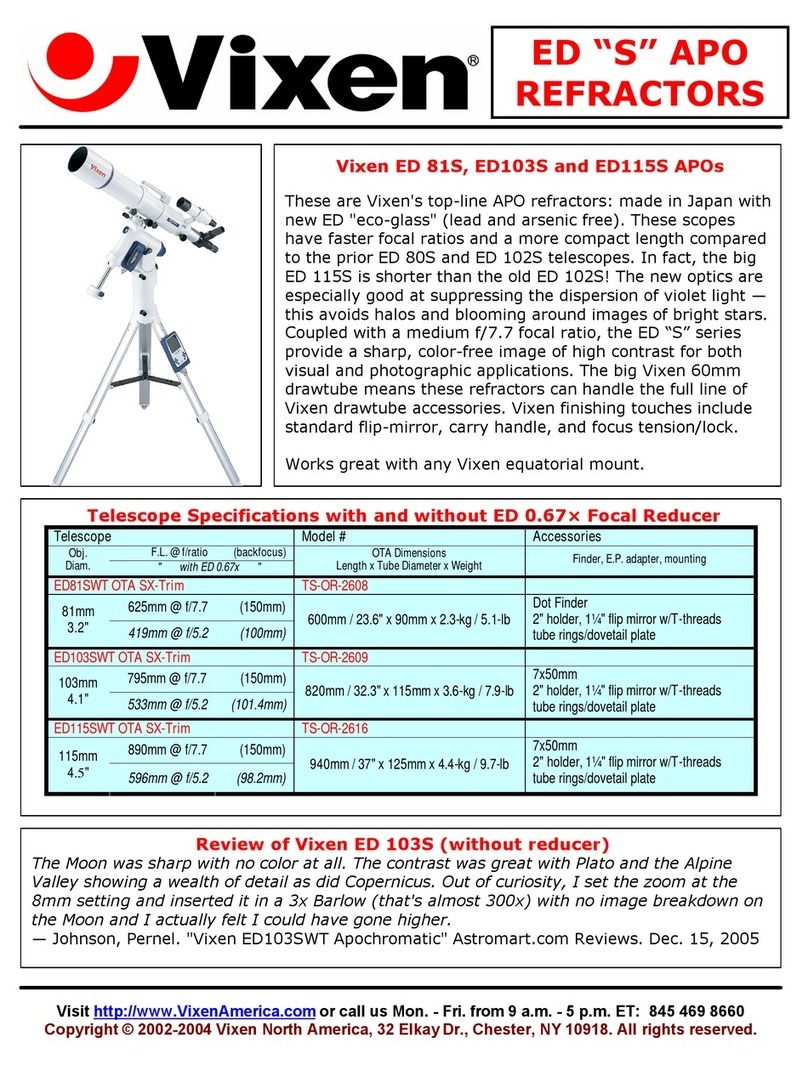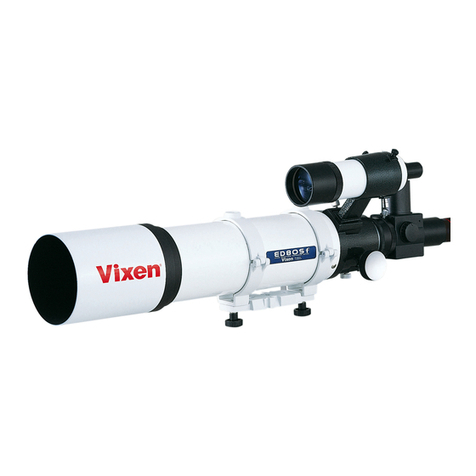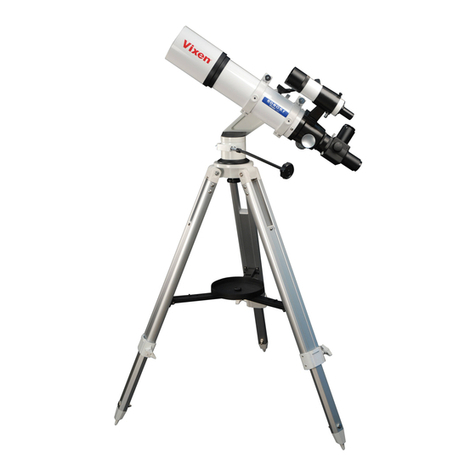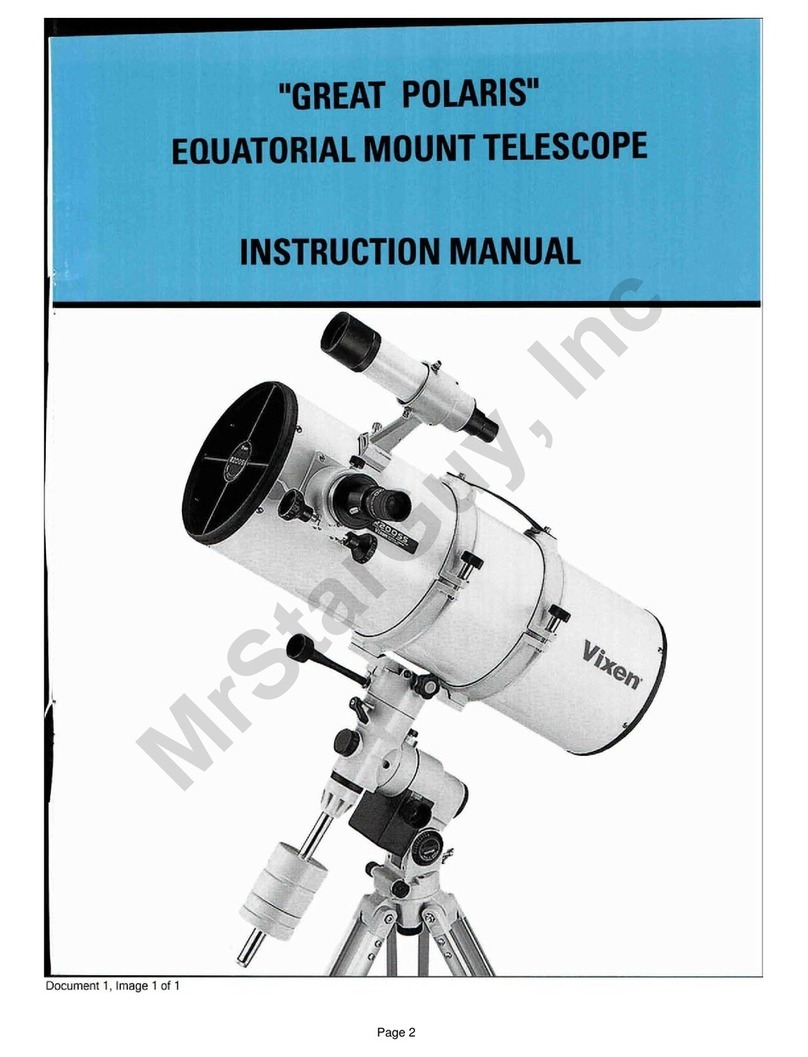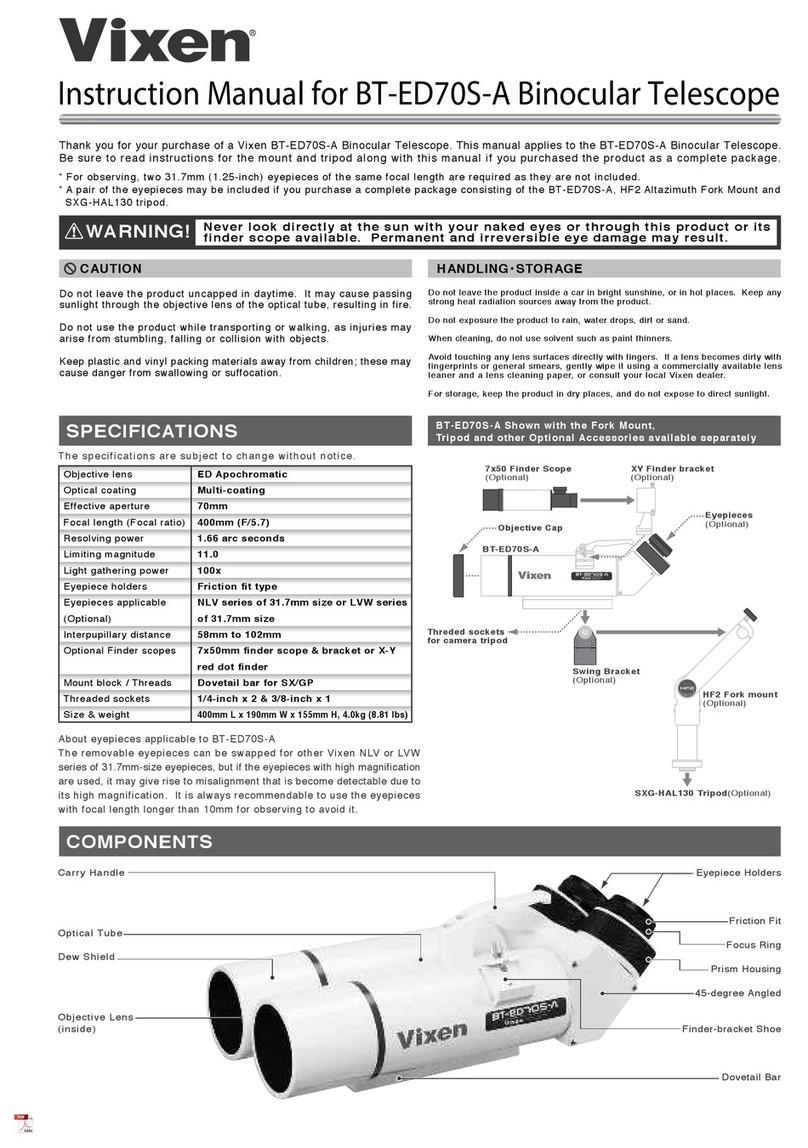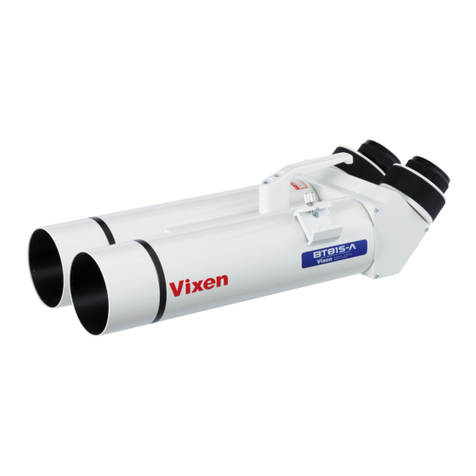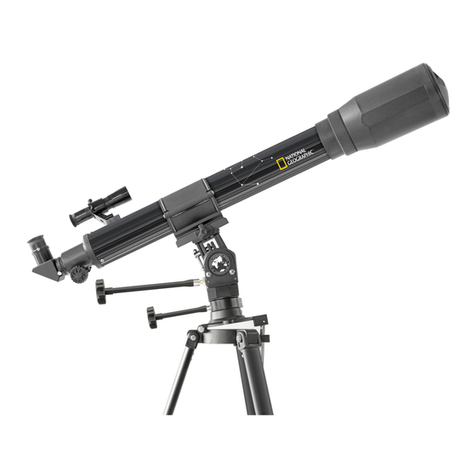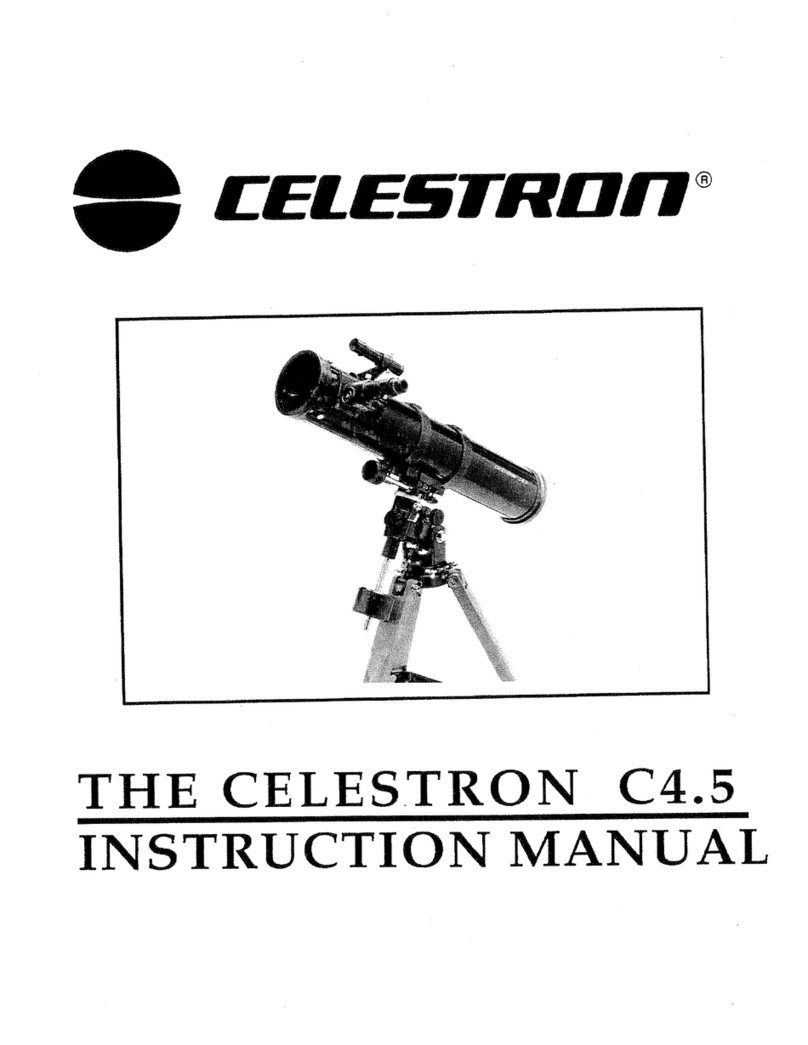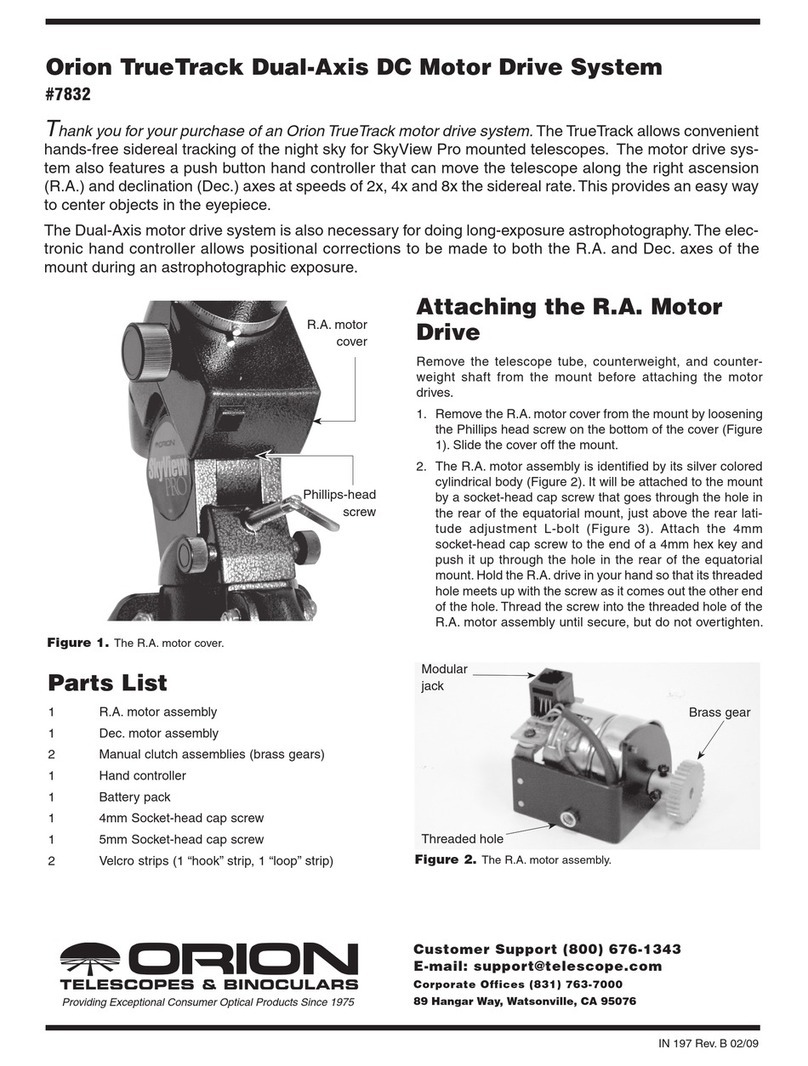42
Astronomy TECHNOLOGY TODAY
VIXEN VC 200L
mary optic back and forth, in effect chang-
ing the focal length of the optical train to
match the location of the imaging sensor or
eyepiece focal point, rather than moving
those elements to a fixed focal point. This
mirror shift can sometimes cause target
objects to shift on the focus plane during
focus and can be quite troublesome while
imaging deep sky objects. Because the
VISAC primary stays stationary, mirror shift
induced image shift is essentially eliminated.
Another interesting feature is the
VISAC’s metal side plate which runs along
one side of the dovetail plate. This brilliant
idea prevents the clamp screws of the saddle
plate from marring the dovetail plate and
should be incorporated on other designs.
Another nice feature is a carrying handle
located on top of the OTA. This proved to
be very useful when lifting the optical tube
on and off the mount. The VISAC is sur-
prisingly light at about 16 pounds including
the supplied 7x50mm finder and 1.25-inch
star diagonal. Vixen also offers an optional
carrying case, and an f/6.4 focal reducer
which is highly recommended for imaging.
The focuser does accommodate a larger
2-inch star diagonal if desired. I would have
preferred that the 2-inch visual back be
equipped with a compression ring instead of
the older school thumb screws as this would
further help prevent possible oscillation of
the diagonal. Compression rings tend to
secure diagonals a bit more solidly than set
screws alone and also help prevent set screw
marring of the diagonal barrel.
These observations took place on June
19, 2007, from Pasadena, California. Seeing
conditions on this evening were about 7 out
of 10 and nice enough to conduct some
good observations of deep sky objects as well
as planets. I started my first observations on
Vega in order to check collimation and star
test the instrument. The collimation was
dead perfect, while the optics exhibited just
a bit of under-correction.
My first observations started with a
Televue 22-mm Panoptic eyepiece. This pro-
duced a magnification of 2x, and framed
M , the Lagoon nebula, very nicely. The
emission nebula exhibits an ample number
of stars for demonstrating the full field per-
formance of the VICAC, and, to my sur-
prise, these were pinpoint from nearly edge
to edge and proved to be much tighter than
those produced by the Schmidt-Cassegrains
I’ve tested in the past. I then slipped in a 2-
inch star diagonal and my 35-mm Televue
Panoptic eyepiece for a magnification of 51x,
and, once again, the stars were pin point
from nearly edge to edge.
One thing that really stood out while
focusing the image was the actual focuser
itself. The VISAC’s stock focuser is one of
the smoothest I’ve ever tested and I really
liked it; in fact it felt even nicer than the
focuser on my 6-inch Takahashi refractor.
Two other observers who were present dur-
ing this observation agreed that the rack and
pinion focuser was exceptional.
Jupiter was pretty well placed at this
point, so I decided to put in some higher
magnification using a Pentax 10-mm XW
eyepiece to yield 1 0x. Although the deep
sky images were quite wonderful, the size of
the central obstruction was a bit less favor-
able for teasing out optimum contrast of the
features of Jupiter. Jupiter however still
revealed a number of colored belts and
enough detail for an interesting and enjoy-
able view. Although there may be more
appropriate choices for planetary observa-
tions, it is important to remember that the
VISAC was not really designed with plane-
tary work in mind.
Next, I decided to have a look at
Alberio, the famous colored double in
Cygnus. High magnifications with a Pentax
7-mm XW at 257x, revealed two very nice
Airy discs surrounded by a few very faint dif-
fraction rings. The red and blue colors of the
pair also stood out quite well.
Overall, the visual image quality of the
VISAC was quite impressive, particularly
considering how portable and light weight it
is. It is a step up in image quality from the
typical Schmidt-Cassegrain in my opinion,
particularly with regard to edge sharpness.
Although the VISAC costs nearly double
what an -inch Schmidt-Cassegrain optical
tube does, I think it’s worth it! The build
quality is very high and collimation options
are almost limitless. There are a series of
adjustment screws at the back of the optical
tube for collimation by adjustment of the
primary and focuser orientation can even be
adjusted as well.


